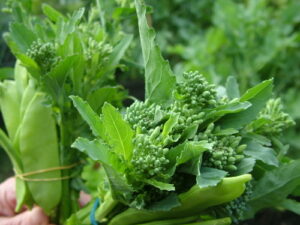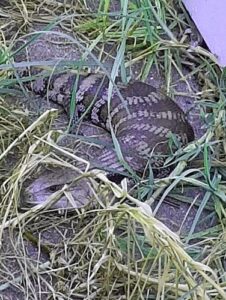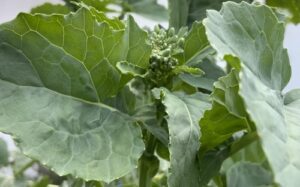Kirsten at Milkwood wrote a post this morning about the cost of producing good, clean food. I started to reply in the comments, and got carried away. This is something that I have been thinking on for many years. In fact, this article is an edited version of one I wrote for Permaculture International Journal over a decade ago.
Back then $30,000 pa was a good average income, and I was responding to someone who queried whether permaculture really was a viable model for feeding a whole population, or was something promoted by hippies on the dole. I wrote:
I am picking up the challenge issued in PIJ 68 to find people who have made a serious income – more than $30K pa – out of permaculture. I have never made $30K, but I know a lot of ways that don’t work.
The image that immediately springs to mind is the permaculturist as a primary producer. If you treat it as a full -time job, it is relatively easy to produce more than your own family can eat. It isn’t even too difficult to produce what would, if it could be magically converted into cash (or if you were on the buying end), be worth $30K. As a young housebound mother with a son in nappies, I had grand visions of making a good living selling all our bountiful extra fruit, vegetables, honey, eggs and herbs.
The conversion is the problem. Being either stubborn or thick-headed, I must have tried just about every marketing method known.
Wholesaling was a complete disaster – half a box of vine ripened tomatoes picked each day, a box of varied shapes and varieties of cucumbers, cabbages with just a little bit of insect damage on the outside leaves, and a very unusual but extremely tasty kind of spinach are not the kind of produce that wholesales.
There are a multitude of problems to do with packaging, labelling, certification and standards. There are also problems to do with transport and pricing. However the main problem is that the characteristics of a good permaculture crop are almost diametrically opposite to a good wholesale crop.
A good crop for wholesaling is a monoculture – a lot of identical boxes all at once of a single variety of uniform size and shape – for ease in transport, grading, pricing, and invoicing. My box each of the dozens of different products I grew and used myself was just not worth the time it takes to process on the market floor.
A good wholesale crop has good handling and transport characteristics. (Your average supermarket vegetable travels 2000 km.) Usually this means it is baseball-like when green and able to be artificially ripened. The Yugoslav tomatoes, though prolific, pest resistant, hardy, and difficult to resist eating like a fruit with the juice dribbling down your chin, failed on all counts.
It is an easily packaged size and shape – anything with prickles or sharp edges is out – try packaging South African cucumbers for the journey to Sydney. It has a long shelf life and a short cropping season – a crop that matures all at once is the ideal for large monocultures employing casual picking labour but means working in the dark for a solo producer. It is good looking, familiar, and fashionable – no yellow plums no matter how tasty.
Permaculturing a crop with these characteristics was, I decided, a contradiction in terms.
Retailing through a shop was even more of a disaster. Sadly permaculture is not a familiar or widely accepted idea, and the market that does exist is too geographically dispersed to support a shop. One of the largest blows to our shop takings was, interestingly, the initial Iraq/Kuwait crisis. We discovered that our loyal customers had been travelling from all over the city, and the hike in petrol prices was the straw that broke the camel’s back of their commitment.
This raised another inherent contradiction – a permaculture shop whose customers burned large quantities of petrol to support it!
Selling through the closest local organic or even conventional greengrocer was somewhat better. However permacultured produce is here in direct competition, and competing with one hand tied behind its back. It must stand the comparison in shelf life, appearance, uniformity, familiarity, and price, yet it cannot exhibit for comparison its taste, nutrition, freedom from poisons, ecological cost, and ethics.
Greengrocers effectively divorce the production and consumption ends of the food chain. Even customers who would like to put their money where their mouth is on ecological and ethical issues have no way of doing so.
The organic certification systems, such as NAASA and BFA, are the best that exists by way of allowing customers to factor in these issues to their buying decisions. However an ad I saw once in an organic growers’ magazine illustrates their limitations for permaculture producers.
The ad was for a property for sale – a Grade A Certified Organic citrus fruit orchard on the Murray River, with a turnover of over a million dollars in fruit that customers would buy at premium organic prices in greengrocers around Australia. It included a photo showing a tractor working along a row of a vast monoculture of identical fruit trees, with a boom spraying some presumably organic pesticide. The ground beneath the trees was cultivated bare and the purchase price included the rights to irrigation out of the Murray River.
One of my more successful primary producer ventures was the Mixed Box system. This was a collaboration between a group of producers to make up boxes of mixed organic fruit and vegetables in season, which were marketed to an urban food co-op. We met once a week to make up the $20 boxes, with the same variety we were producing for our own consumption.
My other success was the open garden system, where I advertised and invited customers to come for a walk around the garden picking produce in the same way I would harvest it myself.
However even these my best systems have an inbuilt lunacy to them. I couldn’t help thinking the whole time how much saner, more ethical and easier all round if the customers simply grew themselves in their own back yard most of the produce that they were burning petrol and spending time and money to get from me. The produce would be fresher, more nutritious, and with less wastage. It would cost them less money, less time, and less stress. And it would solve all the disposal of waste problems that non-gardening households face.
Doing design work for a living faces the same conundrum – it usually makes more sense to give people the skill to do their own designing than to give them the product in the form of a design.
The aim of $30K pa cash income from permaculture is not one that would be sustainable in an ideal world. There would be no market – at least not for this scale of production. In an ideal world of highly information intensive, observant, careful and very local stewardship of land, everyone would be producing most of their basic security needs themselves.
After many years of trying, I eventually decided that “commercial permaculture primary producer” is an oxymoron. Permaculture is not primarily a system of agriculture, but a system of information. An ideal permaculture system is producing not agricultural goods but the knowledge of how to meet human needs, and luxury living, sanely.
If you drop the limiting notion of an income from sale of primary produce, the next problem is what to count in the $30K. Food produced for home consumption, certainly. Income from research, experimentation and knowledge production marketed in the form of teaching, writing, radio, video and demonstrating, for sure.
We produce our own electricity from sun and wind. Obviously this should entitle us to count the in-kind cost of the electricity bills we are avoiding. But shouldn’t we also count the cost of the air pollution produced by conventional electricity systems that society as a whole is bearing, even if it hasn’t (yet) paid the bill? And isn’t our electricity worth more because, by following the permaculture principle of disaster proofing by using multiple sources, it is secure against blackouts, Year 2000 bugs, and political disasters?
A similar argument could be raised for our tank, dam, and windmill-pumped water system, that avoids both water rates and the social and environmental cost of catchment management, giant dams, water treatment and reticulation. And gives us better water – clean, non-chlorinated, soft water for drinking and silty, mineral rich water for the garden.
Ditto for greywater and stormwater treatment, sewerage, garbage disposal, hot water, cooking fuel and so on. A good part of the yearly income of a permaculture system is in the form of in kind goods and services. It skips the energy consuming conversion of work into money and back into goods and services, using the classic permaculture principle of harvesting at the highest energy level.
Plus any sane accounting system would add two extra incomes. All the things that conventional economic theory calls “externalities”, and permaculture economic theory sees as external only to a head buried in sand, collectively add up to a serious slab of that $30K. And all the things that are so rare and delectable that they are un-priceable, like a sun-warm tree-ripened peach, or a glass of rain water, or the security to be only mildly interested in the Year 2000 bug, add up to another serious slab.
And finally, when you have made some of that $30K in money you haven’t had to spend, some in money society or future generations will not have to spend on your account, some in things that are beyond price, and even a little bit in hard cash through sale of some produce, seeds, designs, plants, books, articles, courses, and property tours – what you still have that is worth real money is time.
Time to make garden gnomes or sonatas, do acupuncture or surfing, find new stars or earthworm species , design marriage ceremonies or chess sets. And the freedom to decide to make them for sale, or not.
So Kirsten, this is my Comment: The food produced at Milkwood is only a very small part of the story. Permaculture is not primarily a system of agriculture, but a system of information. If you took your nicolas to the Farmer’s Market (I wish there had been Farmers’ Markets back then!), they would “lose” a large percentage of their value just in taking them out of their context, stripping them of all the knowledge, and all the other yields, embedded in their production. We live with a paradigm of economic theory that does not “get” externalities, the idea that when Western economies are affecting the very climate, nothing is “external”. But things do not fail to exist just because they are not counted.



Such an interesting and sensible article! Thank you for re-publishing it, Linda 🙂 You may be interested, if you have not seen it already, in Jimmy’s Food Factory on SBS TV. Last night he competed directly with conventional products using free-range meat: left-over bits of fr pigs into sausages and parts of ex-laying fr hens. And he working on utilising the male dairy calves. Only small items in themselves but a new way of looking at ‘organic’ or ‘free range’ competing on equal terms. Organic/Free Range products which are 3 or more times the cost of conventional can only be afforded by the very rich, leaving the ordinary folks out of the equation. I have never thought of Permaculture as an agricultural system rather as a set of principles using common-sense everyday items in a new way. And although growing one’s own veges and fruit is an ideal I’m finding increasing age and decrepitude limits my ability to do that and am very glad to buy organic and have it delivered.
I haven’t seen Jimmy’s Food Factory Elaine. I shall look for it. I think nowadays I would be a little more open. There are many people, for all sorts of reasons, who can’t realistically grow a lot of their own food. But I think I still hold to the general idea of home production at a local community level, if not a household level. It’s not the organic growing that makes organic food three times the cost, it’s the incompatibility of organic/permaculture systems and our big supermarket chain dominated marketing systems. Two systems that clash at so many levels.
Thanks so much for sharing Linda. As always your words are thought provoking.
Thank you for publishing this Linda, I have had the same thoughts about monoculture organic farms that seem to just replace a chemical spray with another spray, and how to make money from a permaculture system, when, as you say, it would be best for people to grow their own. I’m starting from a larger scale, so I suppose it does make sense for me to sell meat and eggs to city-dwellers who can’t practically keep beef cattle in their back yards. I’m hoping that we can take a mixed approach – some products, some education, some tourism – to achieve a little income, and produce most of what we need for ourselves anyway, but at the moment we are still working full-time instead. As I write that, I’m thinking that our income should be diverse, as should our farm and garden, no monocultures anywhere!
Both articles are great thought fodder, and I agree that permaculture’s strength is in spreading information to power individuals, communities and bio-regions. I think we need to get back to the 30% of the population that was employed in agriculture in the 70’s, to really see a food system that supports itself regionally and allows for all the other services that the community relies upon. The Gawler Food Forest and the Polyface Farms models are a great insight to this future!
Wow! Thanks Linda. Beautiful article. Yep I utterly agree with you – Permaculture is not primarily an agricultural system. However we did expect to be able to off-set some of the costs of producing veggies on-farm by selling the surplus… but I don’t think we’re going to try and do that now, at least not in the immediate future.
I think the central thing i was trying to get at is that once you arc up from doing it all yourself, the play changes. If it was me doing all this (on a smaller scale) the embodied benefits would tally more directly and make it all ok. But as we’re scaling up to supporting multiple enterprises (the market garden being one of them) there’s more financial burdens and considerations (wages, super, etc), so I have started to scrutinize things in a slightly different way, as i think i must if we’re going to keep this boat afloat.
I’m left with the same conclusions, basically. It’s the right thing to do, many of the benefits are intangible and embodied in things/processes/outcomes other than said potato, etc. But i’m not prepared to tell Michael, who heads the market garden enterprise, that he’s getting paid only in intangible and embodied benefits this week rather than per-kilo for the amazing food he’s in charge of growing (even though, as a long-term permaculturalist, he would agree with that on one level – but he’s also saving to buy his own land). Hmm. It’s late. I think I’m just trying to say the economics of sustainability are interesting. Thanks again 🙂
Every so often you come across a piece of writing that is just brilliant. This is one of those times.
Yes, Linda and Farmer Liz, I see where you are coming from. Currently I buy some organics since I can’t grow my entire needs. The certified farmers use the usual commercial varieties, to do otherwise probably wouldn’t be viable. The growing of food by backyarders/communities is in its infancy. Sooner or later with peak oil, it will have to swing over from huge monocultures the products of which are hauled huge distances to a more Cuba-like growing system. Roofs and so on – wonderfully refreshing ideas. I hope I live to see it, currently the quality of food is questionable with more diseases than ever among we westeners. Pollution may play a part but my view is the nutritional quality of the food.
Oh Linda, you are so right! But my goodness – it is hard either way! Whether trying to make a living or trying to feed yourself. You definitely need to surround yourself with a good community if trying to do it on your own. You make some fantastic points. Kirsten’s article was also very thought provoking. Thank you for sharing this. I will add this article to all the other ideas floating around in my head!
Hi Kirsten, I follow and admire Milkwood. Trail blazing ahead of your time is how ahead of your time becomes your time.